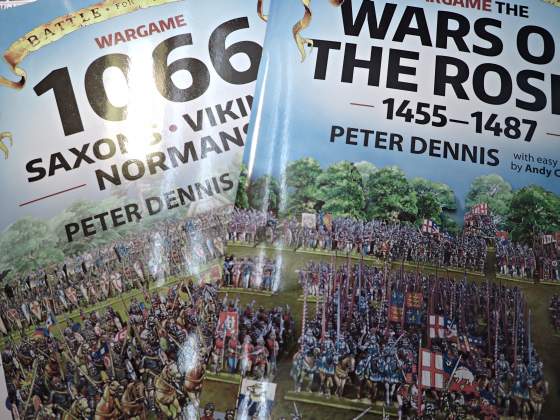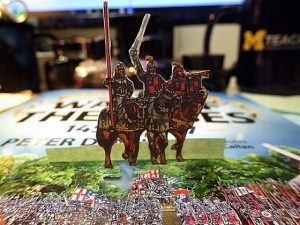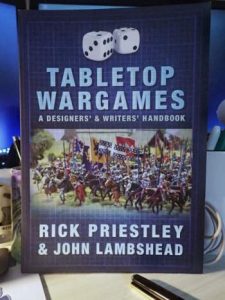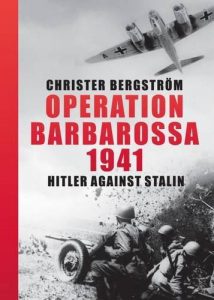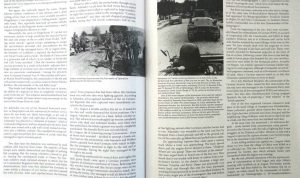Casemate Publishers recently sent two of their books of paper soldiers for review: Wargame: 1066 and Wargame: The Wars of the Roses. They are part of a Battle for Britain series, which also includes books for the Roman Invasion of AD 43 – 84, the English Civil War, and the Spanish Armada.
The books each contain around thirty pages of beautifully illustrated, full-color paper models representing all of the troop types necessary to recreate battles of the period on the tabletop. The figures are approximately 30mm from top of helmet to base. Paper models of buildings, trees and other battlefield accessories are included. Finally, the books contain instructions for assembly, as well as simple sets of rules by Andy Callan.
To build your armies, first photocopy the pages with the desired troop types. Then simply cut and paste. In this fashion, you can create as many stands of figures as desired. Don’t need Flemish spearmen? Don’t copy them. Want extra billmen in livery? Copy away.
In the example below, I made a copy of a page of cavalry on plain paper with my printer at regular resolution. The copy came out looking pretty good, but if I were doing this to build an army, I’d use heavier inkjet paper and a higher print resolution.
After printing, I followed the instructions in the book: scoring the line, gluing, then cutting. I did a quick job with a lousy pair of school scissors, but I still like the overall effect. With the investment of a little more time and some decent scissors, the paper models would look just first rate — especially in ranks, as designed.
The figures have paper bases for mounting, but I’d suggest gluing those bases to thicker pieces of wood or plastic for easy movement. I also wonder if there isn’t some sort of sealer that would stiffen the figures without making the colors run. Mod Podge, for example, or an artist’s spray sealer.
The Battle For Britain series looks like a great way to quickly build playable, good looking armies for the tabletop. Priced between $20 and $30 on Amazon, they are reasonably affordable, even when taking into account the price of the paper and ink. And based on my experience in quickly cutting out a stand of cavalry, I think you could build an impressive army very quickly.
I am definitely going to build a War of the Roses army. I may even get the English Civil War book. I have long wanted to have armies for both those conflicts.



